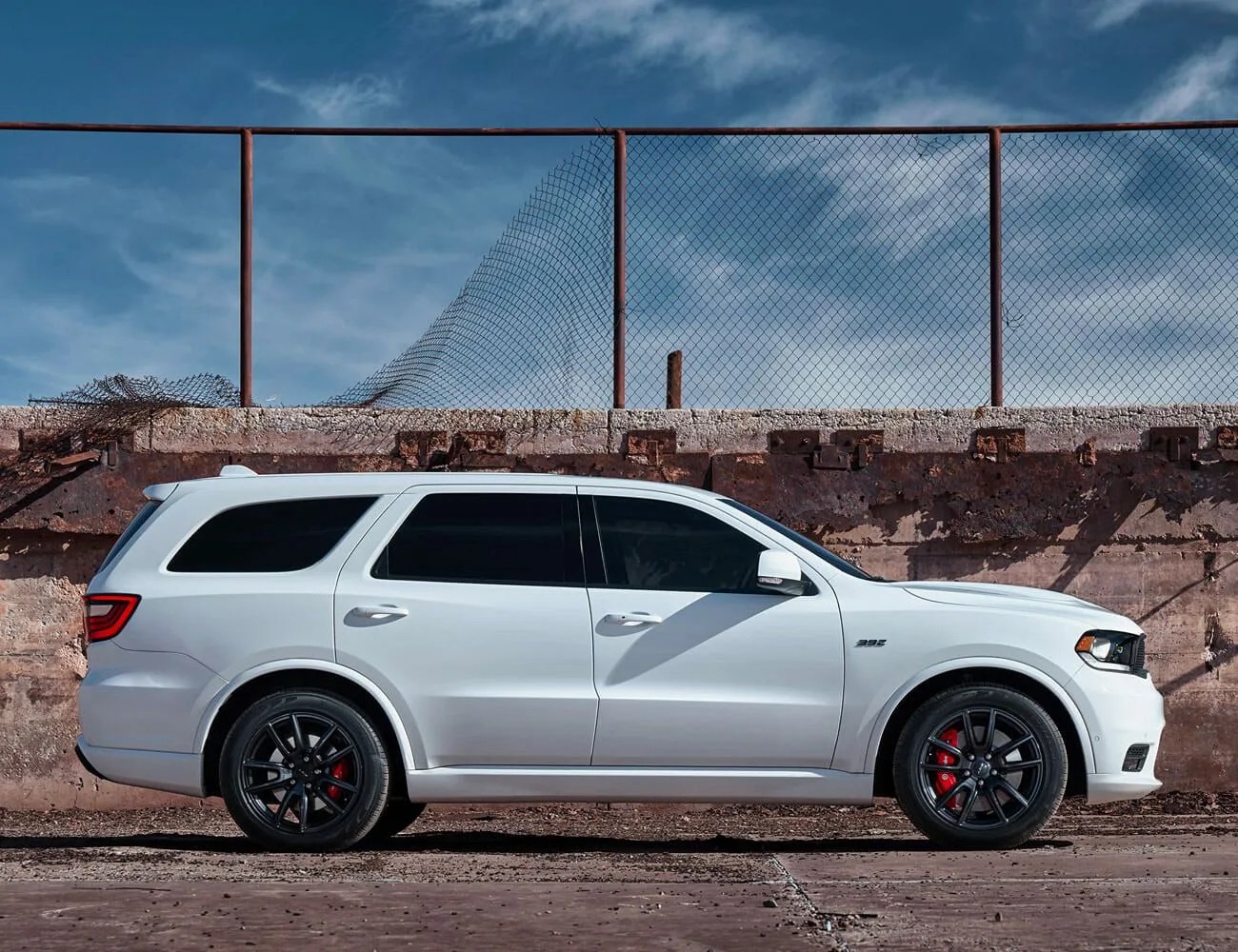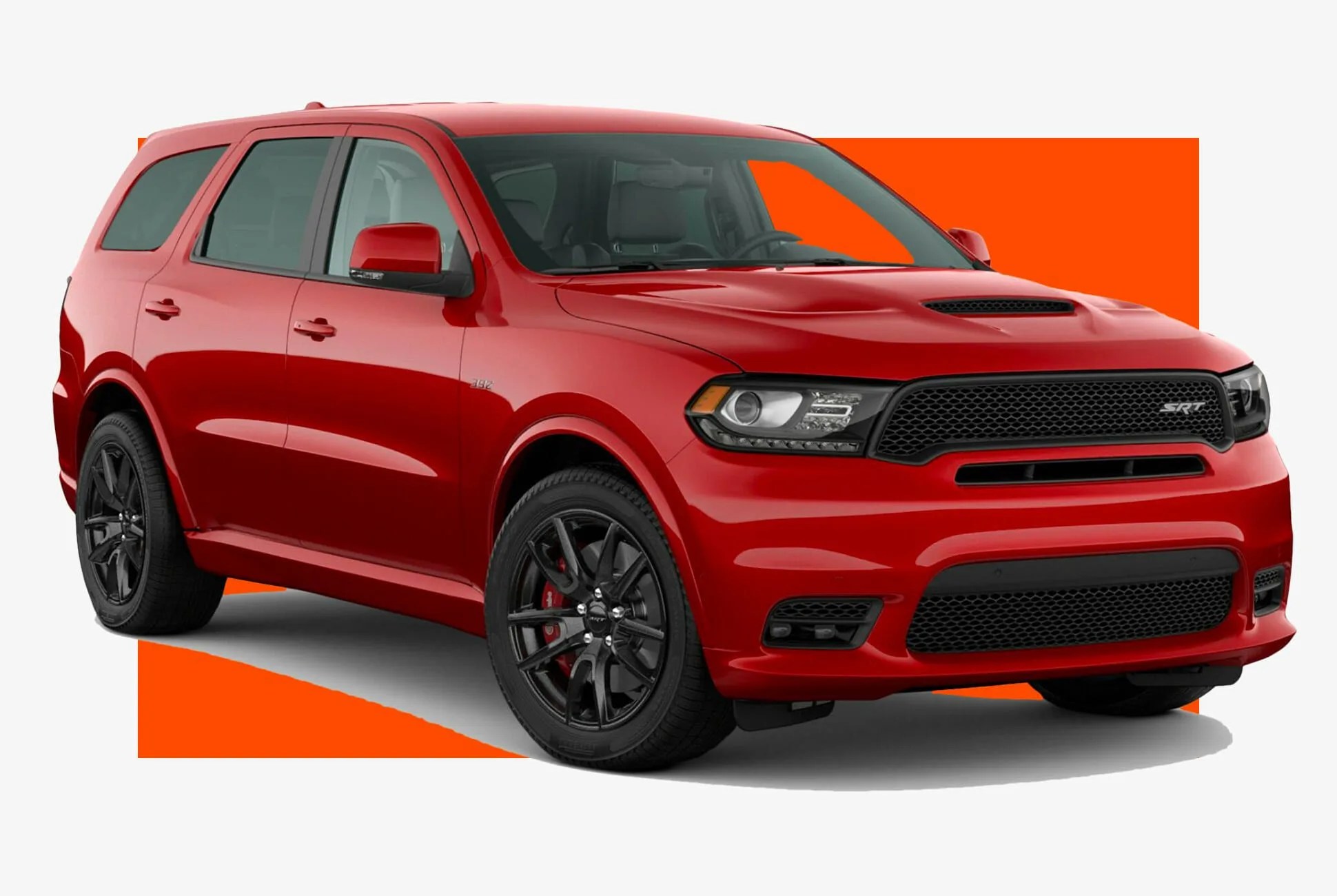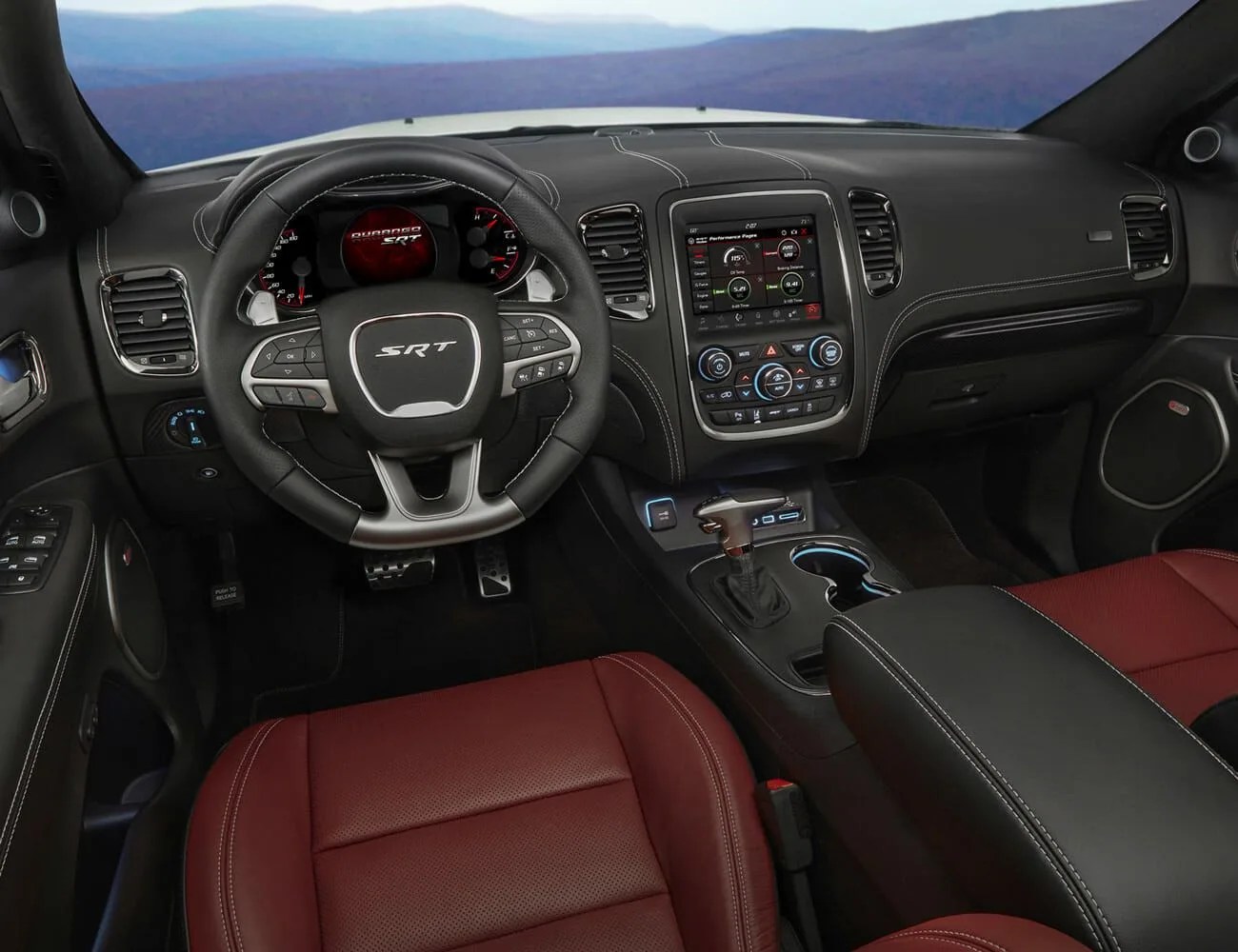The Dodge Durango SRT isn’t the freshest piece of fruit in the SUV produce aisle. While the SRT version arrived just two years back, there wasn’t much new beyond the addition of the 6.4-liter V8 beneath the hood and the sportier suspension between wheels and body; the Durango itself dates back a decade, and much of its platform is shared with Mercedes-Benz’s SUVs of the mid-Aughts, like the second-generation ML-Class that debuted in 2005. Still, much like Keith Richards’s Swiss doctor, Dodge has kept pumping new blood into that aging-yet-still-capable body; in addition to the SRT version, the Durango has seen fairly continuous upgrades over its lifespan, from a 2014 model year facelift to Chrysler’s latest infotainment system two years back.
Why, then, am I just extolling its virtues now? Well, because, due to the quirks of the automotive journalism industry, I hadn’t had a chance to drive it before. Now that I’ve spent some time with it, though, I can honestly say that I’m a little bit obsessed with it.
A note for all you gearheads about to switch over to email and fire a missive my way: I’ll be the first to admit that, unlike the Porsche 911 Turbo S and Ford Mustang Shelby GT500, I’m not obsessed over the Durango SRT because of the unadulterated driving joy it brings. It lacks the joie de conduire of a Porsche Macan or Cayenne or a Mercedes-AMG GLC63; they drive like elevated station wagons, while the Dodge feels like the elder crossover it is.

But it’s certainly not boring, either — not with 485 horsepower under its hood. The 6.4 doesn’t pack the sledgehammer punch of the supercharged Hellcat, but its naturally-aspirated nature means the power grows and grows as the revs rise, rather than coming on like a body blow. As such, it’s more enjoyable to wring the engine out with the paddle shifters, savoring the nuances of the engine. Plus, there’s something satisfying about accelerating quickly without being so quick as to lack time to appreciate it, the way many modern super-speed cars do; it’s like flying instead of teleporting.
Still, thanks to its all-wheel-drive grip, it scoots off the line with a vigor that matches the other Dodges packing this engine, in spite of a curb weight half a ton higher than a Challenger. And while there’s no hiding how much higher it carries its weight than a coupe or sedan, the suspension does a good job of suppressing body roll and keeping the Durango well-planted in a way that doesn’t feel all that dissimilar from a Charger or Challenger. Modern Mopars have never been about carving up corners with scalpel precision; they’re about covering the straight lines between bends as fast as possible, then ideally drifting through the corners with tires smoking.
While part of me would love to see a Durango Hellcat Widebody drop onto the scene like the modern-day version of those Shelby-tuned ones of the Clinton era, the majority of me prefers how much it resembles an ordinary Durango. The SRT front end treatment looks far better than this SUV’s ordinary face — which is probably why you can now also find it on the lesser-V8-powered R/T and V6-powered GT models. From every other angle, though, it’s family car normcore.

